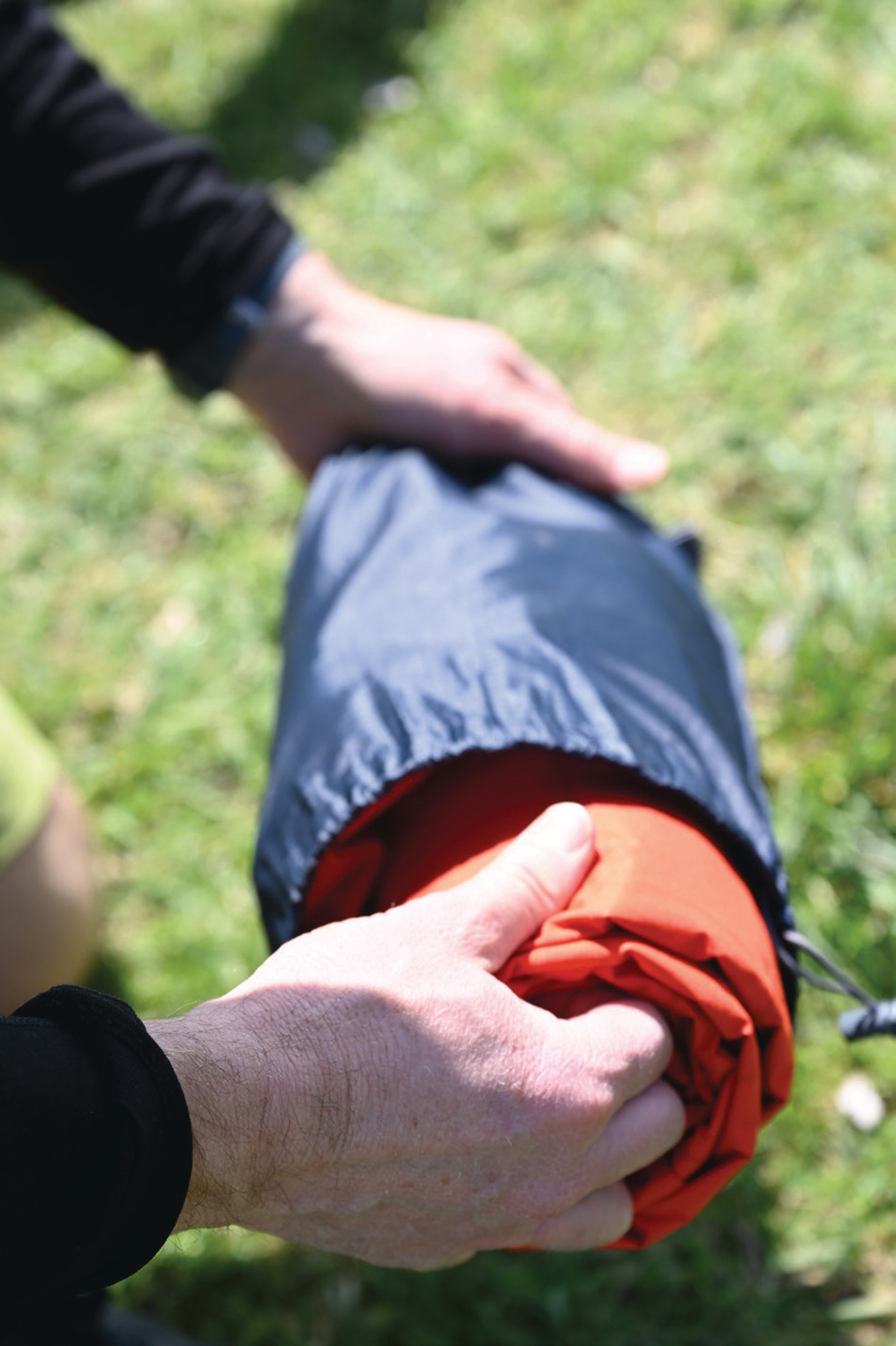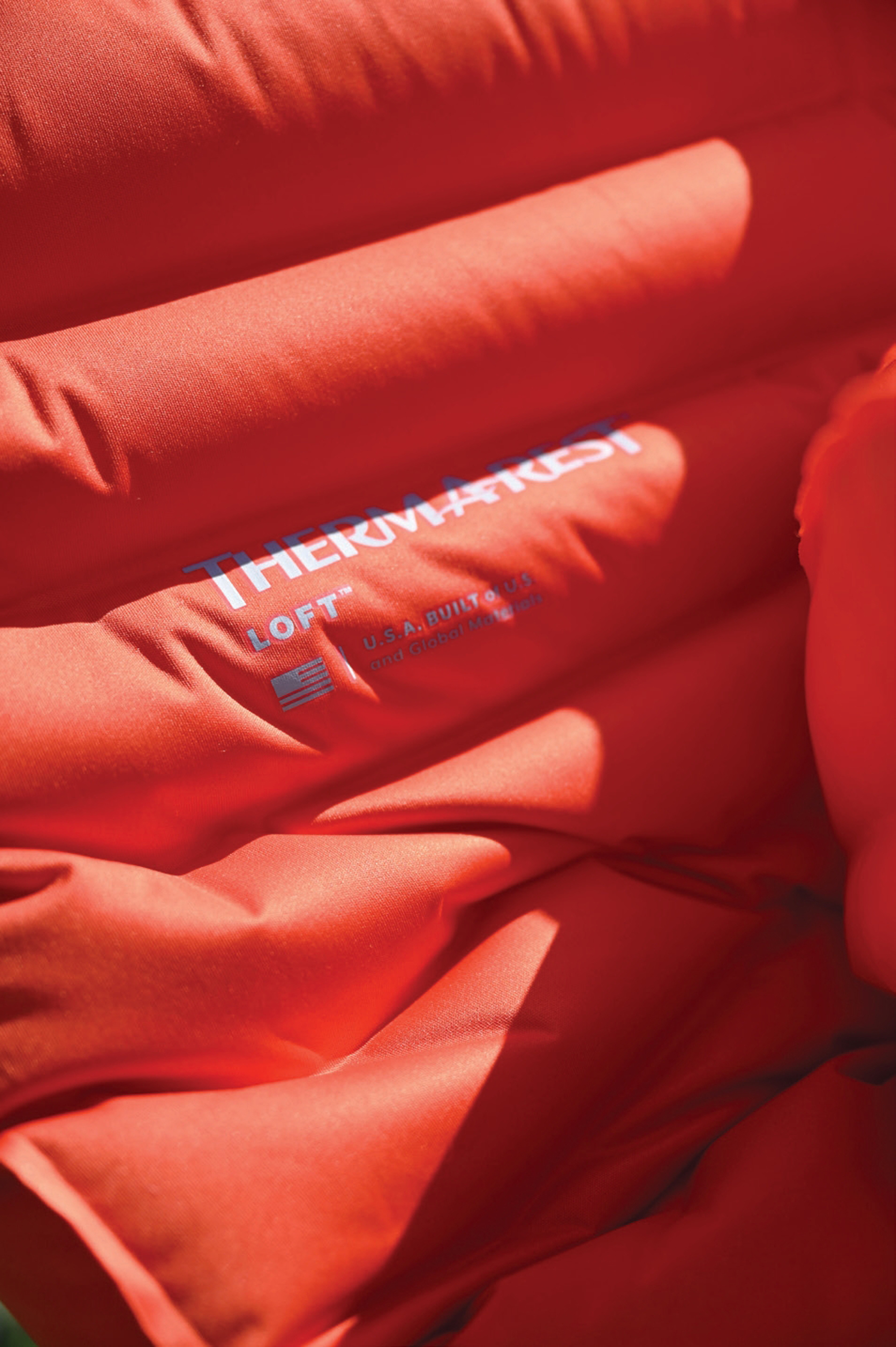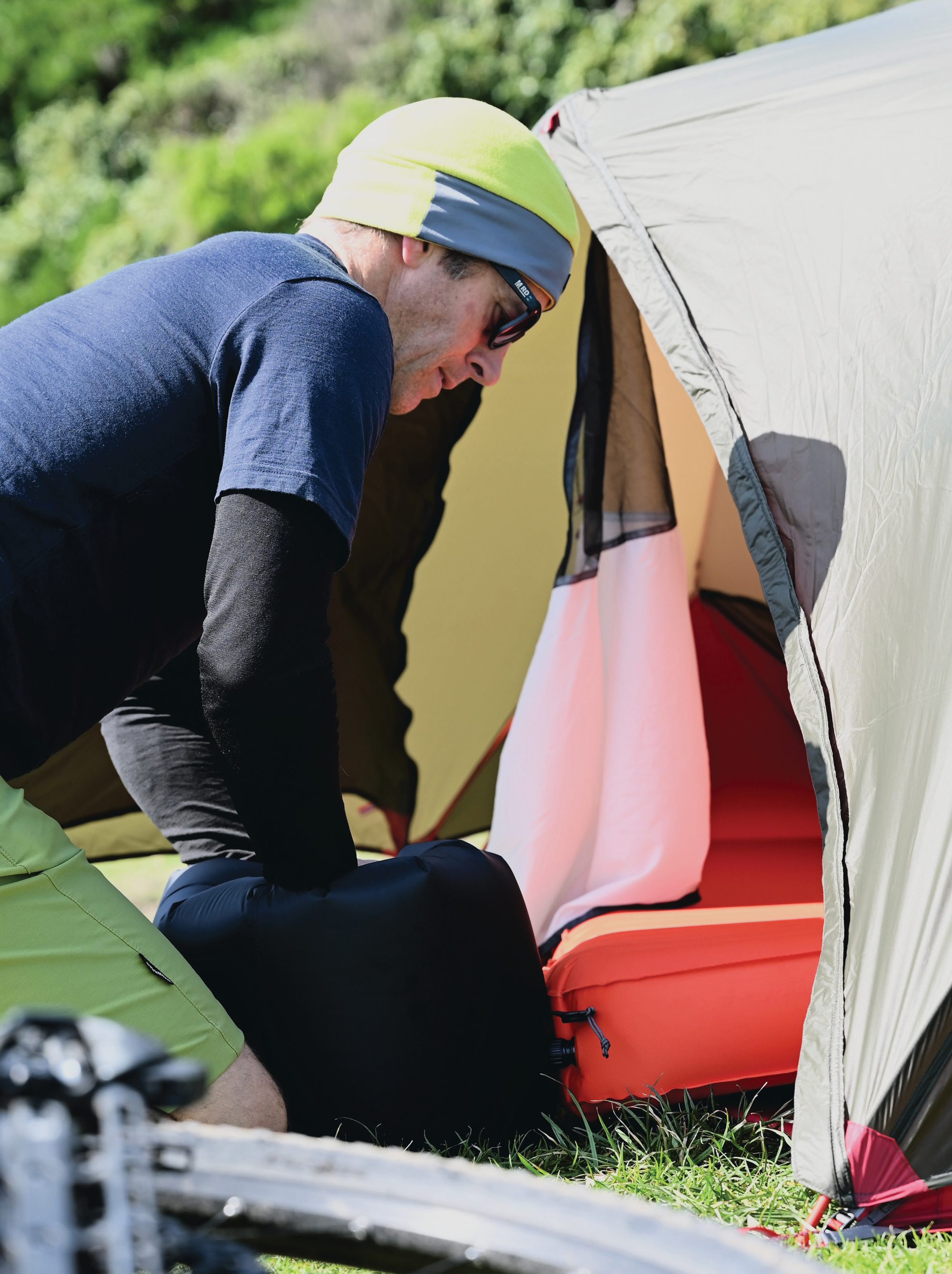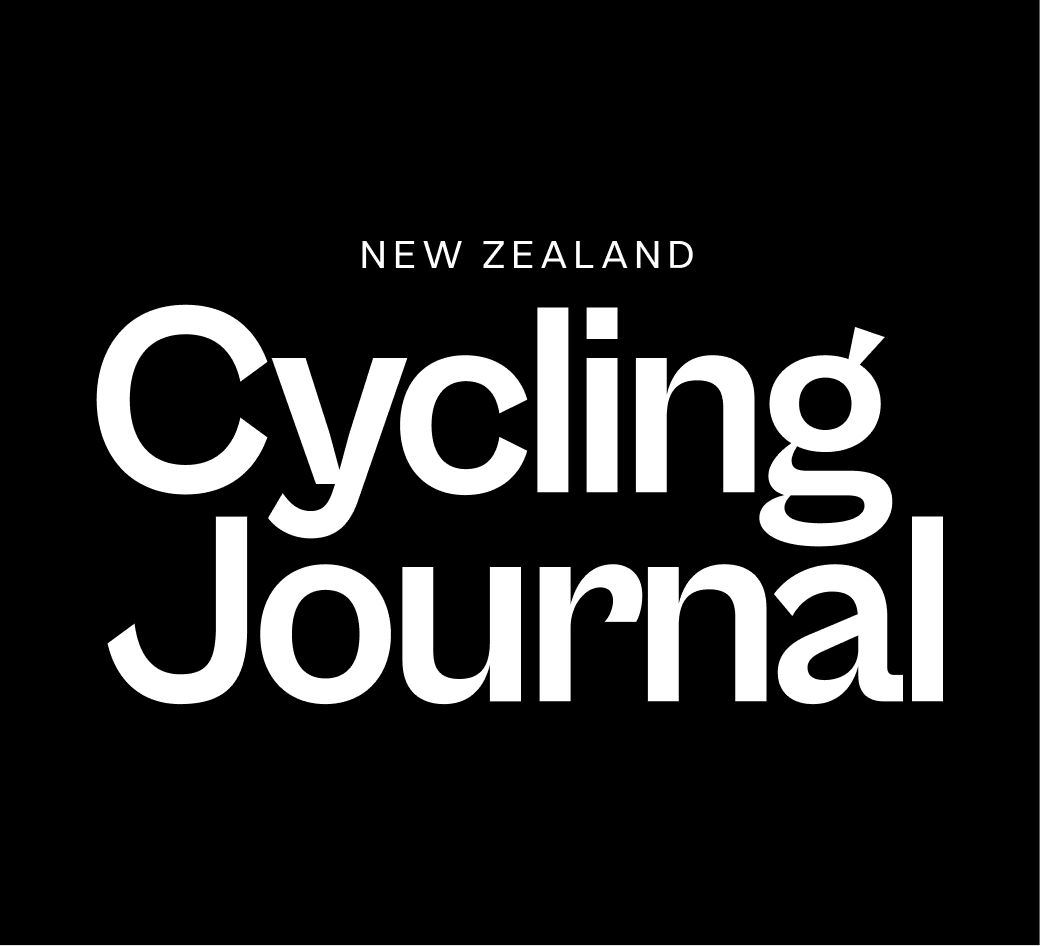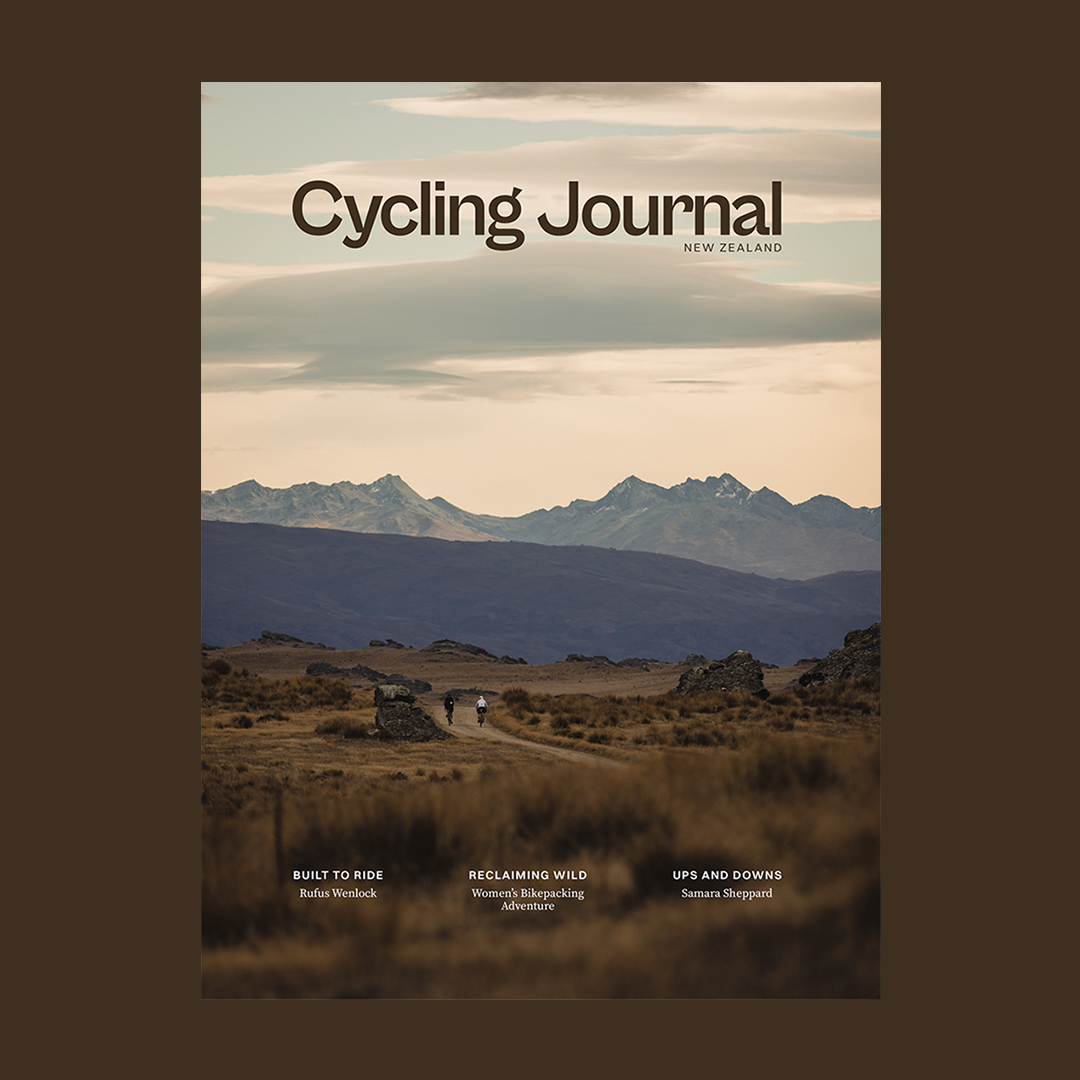Words & Images Lance Pilbrow
RRP Therm-A-Rest NeoLoft Sleeping Pad $599 (Reg), $629 (Regular Wide), $649 (Large),
Therm-A-Rest Boost 650 0ºC Sleeping Bag $649 (Small), $799 (Wide)
Distributor Ampro
My wife and I spent six months cycle touring through Europe, pre-kids. It was our first trip of the sort and we had to buy a lot of gear in a short amount of time. In an effort to save space, we opted for fairly minimal sleeping pads. A few nights into the trip, I knew we had made a mistake.
Therm-A-Rest NeoLoft sleeping pad
I don’t like hauling around more gear than I need, but I hate carrying gear that is only 20% smaller but 90% less effective. As soon as I laid down on the new Therm-A-Rest NeoLoft sleeping pad for the first time, I knew my old sleeping pads would never be used again. Yes, this was probably the biggest, fattest, bulkiest sleeping pad I’d ever tried, but it was comfortable in a way I never dreamed possible from a sleeping pad. Honestly – this was a revelation. If I’ve spent the day riding some 100 or 150 kilometres, I want a good night’s sleep at the end of it.
At about 11cm thick when inflated, the Loft is like sleeping on a bed of marshmallows, and it’s warm too – Therm-A-Rest claim an R4.7 insulation value. What I also appreciated about it was that the material is a kind of stretchy-knit fabric which has a soft touch to and feels kind of cosy when you’re lying directly on it. Even better, it doesn’t squeak like crazy every time you roll over. Speaking of rolling around, it’s actually a really large pad – even the regular size (56x185cm) is a full rectangular shape. It doesn’t oval off the edges, which means that if you find yourself sleeping like a bit of a starfish, or just rolling around somewhat, you never feel like you’re falling off the edge. It’s also available in a ‘regular wide’ (66x185cm) and a ‘large’ (66x198cm), if you need that little bit of extra room. Inflating it is simple, and it comes with a handy bag which connects and inflates when you roll the top closed and squeeze the air from the inflation bag into the mat; it’s fast and effective and keeps moisture out of the bag, but does add yet more bulk to an already pretty bulky mat.
So, what’s the bad news? Well, that comfort comes at a cost. Compressed, the Regular size sleeping pad is a bit bigger than a 1L water bottle and weighs in at 710gm – oh, and it costs $600. So yeah, that’s getting up there, but as seems to be the theme with some of this gear: I’d rather have a slightly bulky, more expensive sleeping pad that I know will provide a good night’s sleep than a $400, slightly smaller pad that will give me an average sleep after a long day on the bike. Honestly, I’m a bit of a scrooge when it comes to spending money, but this is hands down 10/10 worth it.
Therm-A-Rest Boost 650 0ºC sleeping bag
Completing the sleep system, alongside the NeoLoft sleeping mat, was the new Boost 650 sleeping bag. The Boost is a spacious, rectangular sleeping bag that does two neat things. Firstly, the WarmZip™. This is a more-or-less full length zip that runs down the centre of the sleeping bag (in addition to the regular zip on the side) allowing the user to quickly change the overall internal volume of the sleeping bag. As you unzip it, it expands outwards giving more wiggle room and also – by virtue of there now being more internal space and air to heat up – reducing how warm it feels inside by as much as six degrees. That’s quite a handy trick, as it’s easy to feel too hot or too cold in a sleeping bag, and it makes the usable, comfortable range for this sleeping bag much wider and therefore more versatile. I think they missed a marketing opportunity by not calling it the ‘Goldilocks zip’, but that’s just me. Secondly, the Boost also incorporates handy arm holes so that if you are lying in bed scrolling through NZ Cycling Journal’s Instagram account, or thumbing through one of our latest print editions, you can do so with your shoulders and upper body staying toasty and warm. The Boost is available in six sizes, from Small to Long Wide, so you can get just the right size you need. Quality YKK zippers are used throughout, and the hood cinches up snug to give you a really cozy night’s sleep, even on a cold one. It also comes in two levels of ‘fill’; you can choose a slightly lighter 952gm (regular size) bag rated down to 0 degrees with the WarmZip™ open, or the heavier 1205gm (regular size) bag rated down to -6 degrees. I had the regular size, 0 degree rated bag on test for a few nights in spring. Overnight temperatures were around 8 – 10 degrees and I felt totally comfortable. It would have been nice to have some colder nights to test just how warm the bag can be when the mercury really drops, but it wasn’t to be. With the WarmZip™ opened up, I think the bag would still be really comfortable in temperatures a few degrees warmer yet, which is a pretty handy range for most New Zealand conditions. I’m not a martyr, so I don’t tend to go out camping in deep, deep winter but for all but the hottest few months I think this bag would work well for most New Zealand conditions – if it’s really cold, adding a sleeping bag liner or sleeping in some merino thermals, would mean I would be happy to take it camping in some decently cold conditions.
I’d love to see a summer version of this bag that might even be a tad lighter and targeted at people who really do most of their adventures throughout the summer months, as I think it would probably be just a bit too warm for the middle of summer in the North Island. Having said that, even summer down south can get cold at night and it would probably be just right for that. Inside, the regular bag felt like a good match for my fairly regular frame (178cm, 80kg) and I especially liked how the side zip was able to be opened from the bottom as well to provide a bit of ventilation to my feet, something I personally find essential in a sleeping bag. If you already have a functional sleeping bag it might be hard to justify a purchase just for these features, but if you’re in the market for a bag, the WarmZip™ and arm holes seem like such sensible ideas that it would be silly not to consider the Boost 650.


